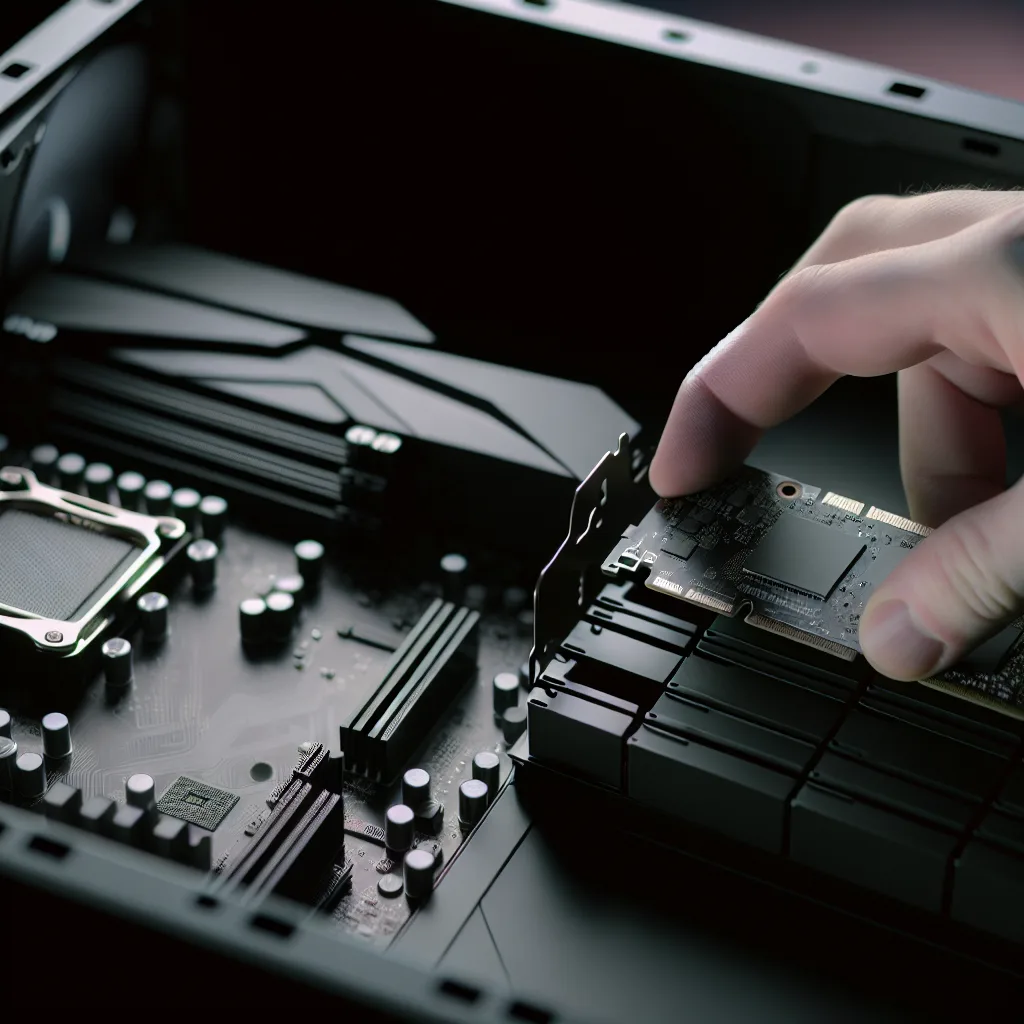You’ve filled every M.2 and SATA port on your motherboard. Now what? Here’s how to add more drives without getting a new board.
It happens to the best of us. You’ve planned the perfect PC build, maybe a powerful workstation or the ultimate home server. You’ve picked the CPU, the GPU, and a motherboard with what seems like tons of ports. But then, a year or two down the line, you hit a wall. Every M.2 slot is filled, every SATA port has a cable running from it, and you’re completely out of room. If you’re staring at your case wondering how to solve this puzzle, you’re in the right place to talk about motherboard storage expansion.
I’ve been there. My main workstation is a beast, juggling virtual machines, a bit of gaming, and even some local AI experiments. It felt like I blinked and all my storage was saturated. The thought of having to choose what to delete, or starting over with a new motherboard, is frustrating. But what if you don’t have to?
What if I told you those other long slots on your motherboard—the PCIe slots—are your secret weapon?
The Magic of HBA Cards and PCIe Slots
When your built-in storage ports are maxed out, the next logical step is to expand using your motherboard’s PCI Express (PCIe) slots. These are the same slots you use for your graphics card, but they can do so much more.
You can get a simple PCIe card that adds another 4, 6, or even 8 SATA ports. These are often called SATA expansion cards or, for more serious hardware, Host Bus Adapters (HBAs). They’re surprisingly affordable and can breathe new life into a storage-locked system.
But here’s the catch, and it’s the question that stops most people in their tracks: Will adding a card to a PCIe slot disable something else?
The Big Question: A Guide to Motherboard Storage Expansion and PCIe Bandwidth
This is the core of the problem. Modern motherboards are complex, and they have a limited amount of high-speed connections, called “PCIe lanes,” to go around. Think of it like lanes on a highway. The CPU has a certain number of lanes (e.g., 16 or 20), and the motherboard’s chipset provides its own set.
Everything—your super-fast M.2 NVMe drives, your graphics card, even some USB ports—needs a lane. To make it all work, manufacturers often have to make compromises.
For example, on some boards:
* Plugging an NVMe drive into the third M.2 slot might disable two of your SATA ports.
* Using a specific PCIe slot might cut the available lanes to your main graphics card slot in half (from x16 to x8).
So, how do you know if that bottom PCIe slot is safe to use for an HBA card without slowing down your GPU or knocking out an existing drive? The answer is simpler than you think.
Your Motherboard Manual: The Key to Storage Expansion
Your motherboard’s manual is the single most valuable resource you have. It’s not just for installation; it’s the definitive guide to exactly how your board allocates its resources. Don’t have the physical copy? Every manufacturer has them available online.
Here’s what to look for:
- Find the Specifications Page: Head to your motherboard’s official product page online. For instance, the MSI PRO B650-A WIFI page has a detailed spec sheet.
- Look for Expansion Slots: In the specs, there will be a section detailing the PCIe slots. It will tell you which slots come from the CPU and which come from the chipset. Usually, the top x16 slot for your GPU is from the CPU, while lower slots are handled by the chipset.
- Read the Fine Print: This is crucial. Look for any footnotes or small text next to the descriptions of the M.2 slots, SATA ports, or PCIe slots. This is where the manufacturer tells you about shared bandwidth. You’ll see notes like, “SATA ports 5 & 6 will be disabled when an M.2 drive is installed in the M2_2 slot.”
- Check the Block Diagram: For a visual guide, the full manual (usually a downloadable PDF) often contains a “block diagram.” This is a flowchart that shows exactly how everything is connected. You can visually trace the PCIe lanes from the CPU and chipset to each port and slot. It’s the ultimate source of truth. You can typically find manuals on the manufacturer’s support site, like MSI’s support portal.
In most modern consumer boards, the bottom x16-sized slot is often electrically only an x4 or even an x1 slot connected to the chipset. This is great news for storage expansion! It means it runs independently of your main GPU slot and usually doesn’t interfere with CPU-connected M.2 drives. So, popping an HBA card in there is often the perfect solution. For a deeper dive into how these lanes work, sites like TechSpot offer great explainers.
So, before you give up on your current setup, grab a coffee and spend a few minutes with your motherboard’s manual. You’ll likely find that the path to massive motherboard storage expansion is just one simple, affordable card away. Happy building!
